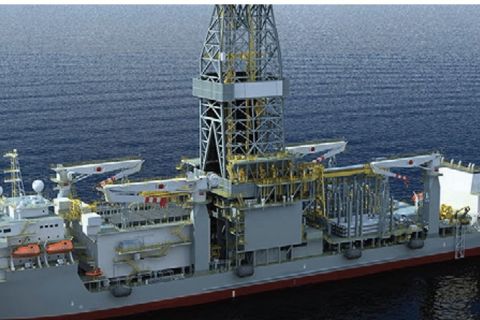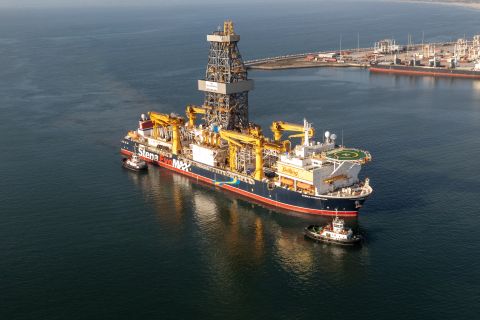More than a century ago, the U.S. was the largest producer and exporter of hydrocarbons, and in the late 1950s and early 1960s, the country was considered a net energy exporter, producing and shipping more than it imported. However, as most know, extreme growth in U.S. domestic consumption and declining production eventually led to the U.S. becoming the world’s largest importer of petroleum and also to the banning of crude oil exports.
Today, the U.S. is seeing a picture much like that of the ’50s and ’60s. Thanks to advances in horizontal drilling and technology improvements in hydraulic fracturing, the country is once again a major oil and gas exporter.
Based on production forecasts from the U.S. Energy Information Administration (EIA), the U.S. is on track to become the world’s largest oil producer and will account for more than half of the worldwide growth in oil production capacity over the next five years. With global demand for NGL, LNG and petroleum increasing, the U.S. could become one of the world’s largest exporters of these commodities.
To many, the U.S. seems to be poised to achieve “energy independence” once again as it rejoins the ranks of the world’s largest energy producers and exporters. Nevertheless, today’s global energy market looks vastly different than it did half a century ago, and energy businesses and consumers will both be impacted by the uncertainty this so-called energy independence brings.
Global demand outlook
In 2017, global energy demand rose by 2.1%—more than twice the previous year’s rate—and more than 70% of this demand was met by oil, natural gas and coal. Due to strong economic growth, China and India accounted for more than 40% of the rise in demand. Over the next 25 years, these two countries will each roughly provide about one-quarter of the growth in energy demand, according to the “BP Energy Outlook” report.
Just this year, U.S. net gas exports more than doubled as gains were seen with the expansion of domestic LNG facilities, which averaged exports of 2.72 billion cubic feet per day (Bcf/d) in the first half of this year. The EIA reports that another four LNG facilities are under construction and slated to enter service by the end of 2019, ultimately increasing U.S. LNG export capacity to 9.6 Bcf/d.
Ethane returns
Ethane prices recently hit a four-year high as demand has increased. The U.S. is producing so much ethane, thanks to the shale revolution, that some of it is being “rejected,” or mixed into the methane natural gas stream. With a surplus in liquids, the race is on for U.S. energy companies to expand NGL infrastructure while providing global markets for ethane and propane. For instance, earlier this year, Energy Transfer Partners LP and Satellite Petrochemical USA Corp. entered into an agreement to construct a new export terminal on the U.S. Gulf Coast to provide ethane to Satellite for consumption at its ethane cracking facilities in China.
As far as oil supply and demand goes, industry experts are optimistic that global oil demand will continue growing over the next 20 years as growth in petrochemicals and air travel will continue supporting long-term oil demand. As the U.S. shale revolution continues, the country’s energy businesses will have to find near-term solutions to handle challenges such as uncertainties around the takeaway capacity out of the Permian, the impact of steel tariffs on U.S. shale development and pending sanctions on global oil flows.
As the global demand for energy expands and the U.S. continues ramping up its exports, energy companies must be prepared for the risks associated with inevitable domestic supply and demand imbalances.
Domestic price volatility
With U.S. natural gas production up and the country becoming focused on gas, many industry experts are concerned that global demand is shifting needed supply from the U.S. In fact, the country’s average deficit in natural gas storage over the past five years has energy businesses and consumers concerned that the winter months of 2018-2019 will once again contribute to price disruptions.
Even if the U.S. were to slow exports in an attempt to meet demand, energy companies would still struggle with the country’s current pipelines and infrastructure—especially in heavily populated areas during extreme hot or cold temperatures. Just last winter, the Northeast experienced extreme winter conditions that resulted in power outages and natural gas prices increasing by 60x to 70x their typical rates.
Because of insufficient pipeline capacity in the region to meet higher demand, the Northeast found itself looking to alternative sources—including importing LNG from Russia.
Natural gas is not only the fuel of choice for many U.S. residential areas—it is also being included in a large segment of new power plant proposals. What’s more, many coal, oil and nuclear power plants, which have fuel stored on site and are essential for reliability when natural gas is in short supply, are retiring under increasing economic and environmental pressures.
Midstream lag
The expansion and building of new gathering systems, pipelines, terminals and stations to handle new production is lagging far behind the growth in production. That said, the timely availability of fuel is critical, highlighting the importance of fuel delivery logistics. In order to navigate an infrastructure that oftentimes does not transport enough supply to meet demand, energy businesses must have complete, real-time portfolio and market visibility, coupled with advanced analytics. These capabilities can help businesses determine hedging and risk strategies as the market continues evolving.
There’s no denying that the global export market presents vast opportunities for U.S.-based energy companies, but it also presents new challenges that expose U.S. businesses and consumers to unparalleled risk that must be properly mitigated to ensure future success.
As the U.S. continues integrating into the world energy market, industry participants must be equipped with the latest capabilities in forecasting, purchasing and hedging strategies and fuel supply management capabilities in order to navigate market uncertainty.
Improved forecasting
Forecasting of energy prices should consider more than just production rates and weather. Export markets, especially LNG, must also now be considered. As more energy is exported from the U.S., integration with the world’s gas markets will also increase, which means worldwide benchmarks for natural gas are more likely to impact U.S. prices. LNG may only end up consuming 15% of the U.S. gas supply, but because commodity prices swing widely with marginal impacts upon supply and demand, the impact on prices of LNG exports and the other factors described above can be significant.
In the past, domestic production points were linked directly to refineries. Now that the U.S. has further integrated into the world energy market, businesses now have the option to export LNG, NGL and crude oil to other markets where prices exceed domestic prices by more than the additional transportation costs. That said, with more rewards come more complexity and risk.
Today, exports present a more complex value chain that is global in nature with more options on what to do with assets and commodities.
For a U.S.-based energy company to remain successful, it must have real-time portfolio visibility coupled with advanced analytic capabilities to understand the real options embedded within various contracts and assets and the ability to properly value and hedge them—from production to storage to liquefaction to regasification.
Hedging strategies
Forward-looking energy companies are reconsidering their strategies on purchasing and hedging supplies. Aside from the volatility of prices that could occur due to LNG exports, the U.S. will be more integrated with world markets.
U.S. generators will be competing with export markets, as well as domestic chemical plants and U.S. consumers, for natural gas supplies. This might lead to a general rise in prices over time and to even more price volatility as uncontrollable factors such as weather events impact residential and business consumers of natural gas. A strategy that simply looks at natural gas production growth and adjusts for weather is unlikely to reliably predict prices or help determine hedging strategies.
Fuel supplies will need to be managed more actively, especially going into seasons of extreme weather. For example, a disruption in supply to a LNG facility may cause the LNG operator to source supply from somewhere else, resulting in fuel disruptions for fleets. Supply interruptions and price volatility will also make storage even more important for generators than it currently is, as it can be utilized for more than just mitigating demand changes due to weather.
In situations such as a pipeline outage, active management with pre-planned mitigation activities can save a business millions of dollars in a very short period of time.
Ensuring success
As the U.S. continues to integrate into the world energy market, supply chain and logistics management will become more complex, meaning businesses must be equipped with real-time portfolio visibility and advanced analytics. Forecasting and analyzing prices, determining the impact of those prices, planning and executing effective hedging strategies, and active management of supply logistics and imbalances are all critical when supply and demand are mismatched.
With the integration of domestic gas into the world market and the impact of commodities such as crude oil, NGL and LNG on natural gas prices, power generators need to make sure they have a comprehensive system that can handle analysis for multiple commodities, a variety of modes of transportation and international trading and logistics.
Enterprise commodity trading and risk management software, such as Allegro Horizon, provides companies with total control and complete visibility across marketing, trading, logistics, inventory, accounting and settlement for both domestic and international operations. This commodity trade risk management software can help mitigate risk and capitalize on growth opportunities as supply and demand patterns shift.
Michael Hinton is chief strategy and customer officer for Allegro Development.
Recommended Reading
Valaris Updates Fleet Status
2024-02-19 - The backlog of these contracts and extensions is valued at $1.2 billion.
E&P Highlights: March 25, 2024
2024-03-25 - Here’s a roundup of the latest E&P headlines, including a FEED planned for Venus and new contract awards.
Shell Brings Deepwater Rydberg Subsea Tieback Onstream
2024-02-23 - The two-well Gulf of Mexico development will send 16,000 boe/d at peak rates to the Appomattox production semisubmersible.
Stena Evolution Upgrade Planned for Sparta Ops
2024-03-27 - The seventh-gen drillship will be upgraded with a 20,000-psi equipment package starting in 2026.
Shell Taps TechnipFMC for 20K System for Sparta
2024-02-19 - The deepwater greenfield project in the Gulf of Mexico targets reserves in the high-pressure Paleogene reservoir.





